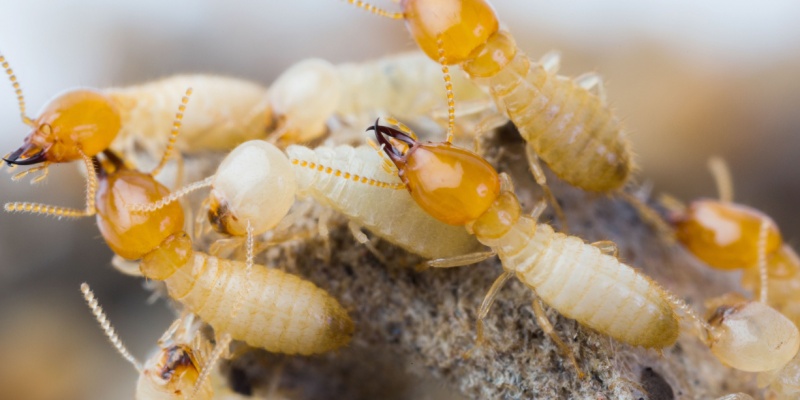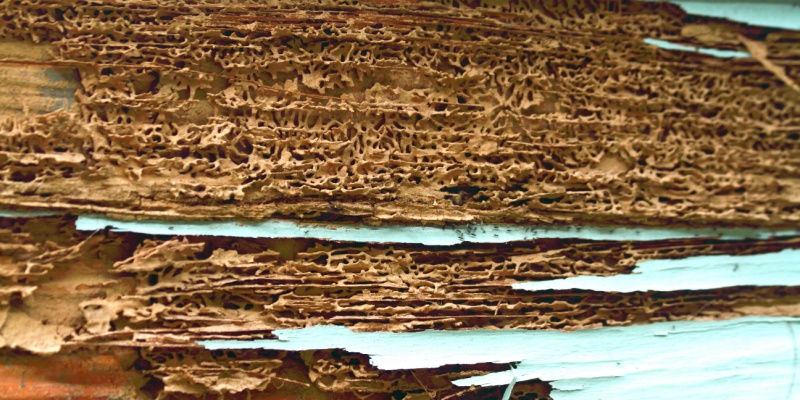Drywood termites are a significant concern for homeowners due to their ability to silently cause substantial damage over time. Identifying a drywood termite infestation early can save you from costly repairs and structural damage. Here are some signs and steps to help you determine if you have a drywood termite problem in your home:
1. Understanding Drywood Termites
Drywood termites differ from subterranean termites in that they do not require contact with soil. They live and feed in dry wood structures such as your home’s framework, furniture, and hardwood floors. Unlike their subterranean counterparts, drywood termites create colonies within the wood they consume, making their presence more challenging to detect until significant damage has occurred.
2. Signs of Drywood Termite Infestation
- Discarded Wings: One of the first signs of a drywood termite infestation is the presence of discarded wings. After swarming to establish a new colony, termites shed their wings. These wings are often found near windowsills, doorways, or other entry points.
- Frass (Termite Droppings): Drywood termites produce frass, which are tiny, pellet-like droppings. These can often be found in small piles beneath wooden structures or where termites have been active. Frass is typically light brown and can be mistaken for sawdust.
- Hollow Wood: If you tap on wood and it sounds hollow or you notice a papery texture, it could be a sign of termite damage. Drywood termites consume wood from the inside out, leaving a thin veneer of wood or paint.
- Blisters in Wood Flooring: Termites can create blisters in wooden flooring. If you notice uneven or bubbling paint or blisters on your hardwood floors, this could be an indication of termite activity underneath.
- Mud Tubes: Although more commonly associated with subterranean termites, some drywood termites may also build mud tubes for protection and moisture retention. These tubes are often found in basements or foundations.
3. Professional Inspection
If you suspect a termite infestation, it’s essential to contact a professional pest control company for an inspection. Termite control specialists have the tools and expertise to accurately identify and treat termite problems. They can also assess the extent of the damage and provide a treatment plan to eliminate the infestation.
4. Preventative Measures
Taking preventative measures can help reduce the risk of a termite infestation:
- Regular Inspections: Schedule annual inspections with a pest control professional, especially if you live in an area prone to termite activity.
- Moisture Control: Fix any leaks and reduce moisture around your home, as termites are attracted to damp environments.
- Seal Cracks and Holes: Ensure that all cracks and crevices in your home’s foundation and walls are sealed to prevent termites from entering.
- Proper Ventilation: Ensure your attic and crawl spaces are well-ventilated to reduce humidity and deter termites.
- Wood Treatment: Consider treating exposed wood with termiticides to create a protective barrier against termites.
5. DIY Detection and Prevention
While professional help is often necessary, homeowners can take some steps to detect and prevent termite infestations:
- Monitor Wooden Structures: Regularly inspect wooden structures in and around your home for signs of damage.
- Use Termite Baits: Place termite baits around your home to detect termite activity early.
- Remove Wood Debris: Keep your yard free of wood debris, old tree stumps, and other potential termite food sources.
Drywood termites are a formidable foe, but with vigilance and professional assistance, you can protect your home from their damaging effects. Early detection and treatment are key to minimizing the impact of an infestation.



